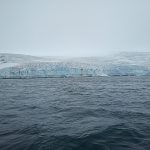Archives 2020
- January 23, 2021
- Shivani Majmudar
President Joe Biden's White House science team faces cascading crises as it takes command amid COVID-19, escalating climate change and crippling public doubts about science.
- December 20, 2020
- Caroline Elizabeth Catherman
New research has found a big flaw in one of the most widely accepted theories about earth’s climate, Milutin Milankovitch’s century-old theory of ice ages.
- December 18, 2020
- Shivani Majmudar
COVID-19 swept the world, with little regard for anyone who stood in its path. Within weeks, the virus killed thousands, isolated people in their homes
- December 18, 2020
- Shivani Majmudar
Amid this year’s global pandemic, the world is also fighting more frequent and severe hurricanes, larger wildfires and prolonged heat waves—indicative that climate change is
- December 18, 2020
- Grace Elizabeth Rodgers
In a race against climate change, Yuxin Zhou, 26, is among the next generation of climate scientists studying the Earth’s responses to rapidly rising temperatures,
- December 18, 2020
- Marisa Sloan
Despite the sci-fi name of this rare-earth element, neodymium is actually pretty common. The silvery metal is used in everything from cell phones and wind
- December 18, 2020
- Grace Elizabeth Rodgers
Melting freshwater icebergs raise critical questions about ocean circulation. However, to find answers to what’s happening on ocean surfaces, some scientists are searching ocean floors
- December 18, 2020
- Grace Elizabeth Rodgers
Researchers have long tracked the timing and retreat patterns of the North American Laurentide ice sheet, the greatest ice sheet to exist in the Ice
- December 17, 2020
- Marisa Sloan
Faced with a challenge as mammoth as climate change, scientists are turning to some very tiny organisms for insight — coccolithophores, the single-celled algae that
- November 19, 2020
- Grace Elizabeth Rodgers
At the first 2020 Presidential debate, President Donald Trump said that Green New Deal supporters “want to take out the cows” to reduce greenhouse gas
Categories
Latest Articles
February 1, 2024
Contact Information
Abigail Foerstner, Managing Editor and Medill Associate Professor




